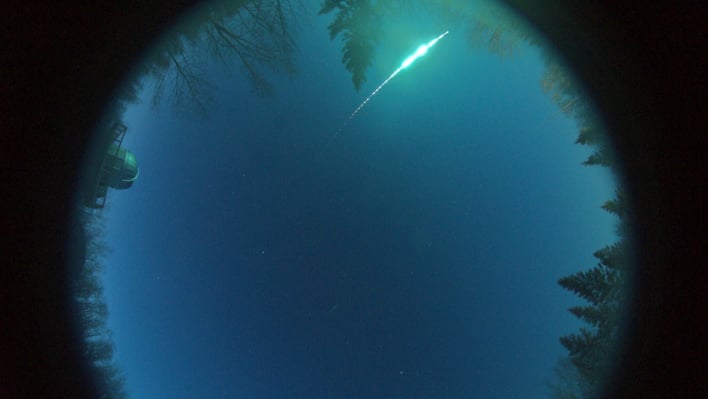Rocky Fireball That Vaporized In Canada Is A Surprise Twist To Solar System's Origin Story

The Oort Cloud is a group of celestial bodies that begin approximately 186 billion miles (300 billion kilometers) away from the Sun, according to NASA. Due to the vast distance from the Sun, it has been believed that all the bodies that exist in this giant spherical shell surrounding our home star are icy bodies. Now, an international team of scientists is challenging this thought with new findings published recently in Nature Astronomy.
"This discovery supports an entirely different model of the formation of the Solar System, one which backs the idea that significant amounts of rocky material co-exist with icy objects within the Oort cloud," remarked Denis Vida, a Western University meteor physics postdoctoral researcher. "This result is not explained by the currently favoured Solar System formation models. It's a complete game changer."
Up to this point, all of the previous rocky bodies have originated from much closer to Earth, making this fireball "completely unexpected." The fireball in question was detected by the state-of-the-art Global Fireball Observatory (GFO) cameras, located in Alberta, Canada. Researchers were able to use the Global Meteor Network tools in order to determine the meteoroid was traveling on an orbit usually reserved only for icy long-period comets from the Oort Cloud.
"In 70 years of regular fireball observations, this is one of the most peculiar ever recorded. It validates the strategy of the GFO established five years ago now, which widened the 'fishing net' to 5 million square kilometers of skies, and brought together scientific experts from around the globe," explained Hadrien Devillepoix, research associate at Curtin University, Australia, and principal investigator of the GFO. "It not only allows us to find and study precious meteorites, but it is the only way to have a chance of catching these rarer events that are essential to understanding our Solar System."
Part of the evidence pointing to this fireball being a rocky body was that it descended much deeper into the atmosphere than icy objects on similar orbits and broke apart in the exact manner of a fireball disintegrating into stony meteors. In comparison, comets are essentially "fluffy snowballs mixed with dust" that gradually vaporize as they approach the Sun.
Vida says that the team of researchers want to explain how this rocky meteoroid ended up so far away in order to better understand our own origins. By gaining a better understanding of the conditions in which the Solar System was formed, "the better we understand what was necessary to spark life," stated Vida.

